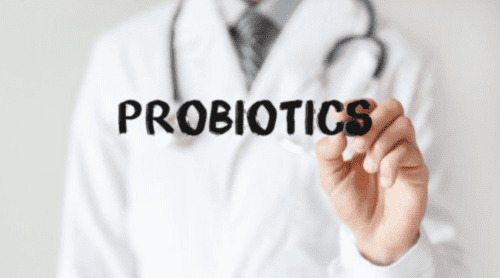So, you have been prescribed an antibiotic, and your healthcare provider recommended that you take a probiotic. Perhaps you have a few questions you would like to get clarified. Take a moment to read this article that provides brief insights into the top 5 questions most people ask.
Antibiotics versus Probiotics –
Antibiotics are substances that will either suppress the growth of bacteria or kill them completely. Between 1945 and 1972, average life expectancy increased by an additional eight years, an increase largely credited to the introduction of antibiotics.1
There are several classifications of antibiotics that are based on a bacterial spectrum known as Broad and Narrow. Broad-spectrum antibiotics like amoxicillin and ciprofloxacin target multiple strains of bacteria at once. In comparison, the newer narrow-spectrum antibiotics like erythromycin and clindamycin focus on a more limited range of organisms. A significant disadvantage of both is that they can kill good bacteria, too, but broad-spectrum antibiotics are the ones that carry the most significant risk. When good bacteria becomes depleted, you may experience an upset stomach with loose stool, an event known as antibiotic-associated diarrhea (AAD).2

In contrast, probiotics are live microorganisms known to have health benefits when consumed.3 They can be found in yogurt and other fermented foods, dietary supplements, and even beauty products. Although most people often think of bacteria and other microorganisms as harmful “germs,” many are quite helpful, and even referred to as “friendly” bacteria. Some bacteria help digest food, destroy disease-causing cells, or produce vitamins. For example, Bifidobacterium animalis is a strain of probiotic that is found in Dannon yogurt’s Activia product. B. animalis which is helpful in aiding digestion and fighting food-borne bacteria. It’s also thought to boost your immune system. Many of the microorganisms in probiotic supplement products are the same as or similar to microorganisms that naturally live in our bodies. 4,5
Bottomline antibiotics are (non-living) substances that are not naturally found in our bodies. In comparison, probiotics are live microorganisms that resemble or are the same as those that already live in our bodies. Antibiotics and probiotics both serve a significant purpose when used properly.
Now with that brief review of antibiotics versus probiotics, let’s get to those Top 5 Questions asked…
#1) Would taking a probiotic cause the antibiotic to be any less effective?

The short answer is No. Currently, there is no conclusive research stating that probiotics interfere with the action of antibiotics. Probiotics provide balance to the composition of the gut microbiome, oppose to having a direct effect on antibiotics.6 The microbiome is the composition of microorganisms that colonize the gut. Researchers have been able to confirm a well-defined bi-directional relationship between these microorganisms and their host that has a significant effect on the host’s health.7
On the other hand, however, antibiotics can and will kill probiotics if introduced together. Simply because antibiotics kill bacteria, and that’s what most probiotics are. There are also some that are yeast. For example, Saccharomyces boulardii is a yeast that has probiotic properties, and it is not targeted by antibiotics; thus, making it an ideal probiotic strain when taking a course of antibiotic treatment. In a systematic review, S. boulardii was also observed to have “significantly increased the eradication rate”8 of H. pylori, a bacteria that can infect the stomach.9
#2) Can probiotics and antibiotics be taken together at the same time?

In short, no, because it really depends on the antibiotic. It’s advantageous to take probiotics throughout a course of treatment; however, they shouldn’t be taken at the exact same time. Most probiotics should be taken at least TWO HOURS AFTER taking antibiotics; this time-lapse will substantially reduce the chances of the antibiotics destroying the probiotic microorganisms.10
Researchers found in a study that reviewed the effects of antibiotics on the human gut microbiome that the “use of probiotic bacteria aimed at impeding dysbiosis or at reestablishing the gut microbiota after antibiotic treatment is a promising approach.”11 These are meaningful findings considering that “microbiome alterations induced by antibiotics can also indirectly affect health in the long-term.” Exposure to antibiotics can cause disruptions within the body’s physiological equilibria, which may increase vulnerability to long-term disease.11
However, of note, extensive clinical research suggests the best probiotics to take with antibiotics are strains that can be taken together with antibiotics rather than separately. These specific strains are Lactobacillus acidophilus, Lactobacillus rhamnosus, and Bifidobacterium lactis. What is helpful about these particular strains is that they are effective when taken at the exact same time as antibiotic medication, which is not the case for the majority of other probiotic supplements. 12 Know that it is not necessarily incorrect or counterproductive to take other probiotic strains together with antibiotic medication. It just means that the probiotic may not be sustainable; however, the antibiotic medication itself would not be affected. Since not all probiotics are equal, whenever able, it is best practice to take strains of probiotics that have been studied to help with the specific health concern or situation you are trying to support.
#3) Are certain probiotics better than others when taking an antibiotic?
The main reason why this question comes up is to avoid the GI discomfort and diarrhea associated with the antibiotic. So, knowing this to be the case, it is essential to select strains of probiotics that have been adequately tested in clinical trials and shown to reach the gut alive when taken together with antibiotics. Thus, the more helpful bacteria present in the gut, the lower the chance of developing digestive issues like diarrhea.

There are primarily three specific strains of probiotics in particular that have been shown to do this. They are the following: Lactobacillus acidophilus Lactobacillus rhamnosus, and Bifidobacterium lactis. Thankfully, most probiotic supplements have these three strains included.
In clinical trials involving participants undergoing antibiotic treatment for Helicobacter pylori infection, the participants were given Lactobacillus acidophilus, Lactobacillus rhamnosus, and Bifidobacterium lactis, alongside antibiotics; all three strains were proven to survive alongside the medication.13,14
#4) When taking my antibiotic should the dosage of the probiotic increase?

Simply stated, no. Unless otherwise directed by your health care practitioner, changing the dosage of the probiotics that you from what is indicated on the bottle is not advisable while undergoing antibiotic treatment. In general, it is best to follow the directions on the label of your probiotics. As stated previously, antibiotics can kill good probiotic bacteria. So it is understandable to believe that increasing the dosage of probiotics would help to counteract this. However, it is not necessary, as any diminishing effects of the probiotics can be adequately avoided by taking probiotics at least 2 hours after taking antibiotics.10
#5) Are there any side effects of taking a probiotic?
Yes, there can be. While most people do not experience side effects, the most common are a temporary increase in gas, bloating, constipation and thirst. The most commonly reported reaction to bacteria-based probiotic supplements is a temporary increase in gas and bloating.15 While those who take a yeast-based probiotic (e.g. Saccharomyces boulardii) may experience constipation and increased thirst.16 Studies have not been able to explain why some people experience these side effects conclusively; however, they typically subside after a few weeks of continued use.15 A way to reduce the likelihood of side effects, start with a low dose of probiotics and slowly increase to the full dosage over a few weeks; doing so will help your body adjust to them.
One Extra – for those who may be thinking…
When is it best to stop taking the probiotic or should it be taken indefinitely?
Best to ask your healthcare provider. Primarily because the time frame for when to discontinue probiotic use is somewhat unclear. Researchers have stated one to four weeks.17
Studies have shown that taking probiotics after antibiotics will help to restore the natural balance of the gut. Probiotics themselves are transient (meaning they do not populate the gut and remain there), but they promote a healthy composition of the microbiome of the gut and introduce “beneficial functions to gut microbial communities.”18 The result is that they prevent inflammation/disease and in some cases, fight against it. So choosing to continue taking them in the form of supplementation or foods will continue to promote overall gut health.

In Summary
- Replenishing your gut with probiotics helps to re-balance your gut microbiome following antibiotic use; so it’s important to select probiotics to take with antibiotics, don’t wait until the course is over.
- Studied strains that can be taken at the same time of your antibiotic include Lactobacillus acidophilus, Lactobacillus rhamnosus, and Bifidobacterium lactis.
- For different strains of probiotic supplements, wait at least 2 hours after your antibiotics before taking probiotics.
- Remember your doctor prescribed the antibiotic to help eradicate the harmful bacteria. So, it is important to follow the advice from your doctor; make every attempt to take and finish your course of antibiotics as prescribed. Taking probiotics along with antibiotics may reduce digestive issues and enable you to finish a course, reducing the chances of antibiotic resistance.
- Probiotic supplements are just one way you can consume this friendly bacteria, you also have the option of consuming your probiotics in active culture-containing and fermented foods and drinks like yogurt, sauerkraut, miso, and kefir.
- Finally, if you didn’t realize the benefits of taking a probiotic with an antibiotic until now, and you have already finished a course of antibiotics, better late than never; by all means, take a probiotic now!
If you would like to see more articles like this or have any suggestions on future topics please leave me a comment.

Reflecting on January: 5 Powerful Strategies to Realign Your 2024 Wellness Goals
As We Bid Farewell to January,...it's crucial to reflect on its relevance to your wellness journey. Was it a great start to your 2024 health and wellness goals, a continuation or step up from last year's goals, or a mixture? Regardless, it's time for accountability....

BLACK Friday

Weekend Travels…
Innovative Health Technology Conference

